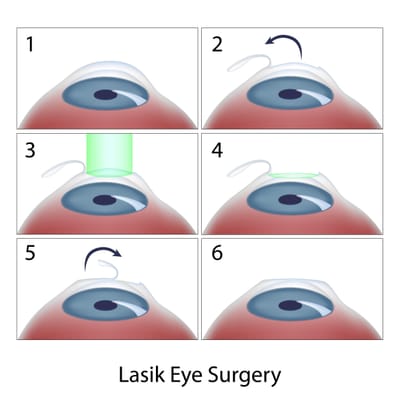Refractive Surgery

Since FDA approval of the Excimer Laser in 1995, Dr. Feil has been performing Laser Vision Correction. PRK (Photo-Refractive Keratectomy) was the most popular type of laser vision correction until FDA approval of LASIK (laser in-Situ-Keratomileusis). LASIK is now the most common type of refractive surgery performed by the Visalia Eye Center surgeons, but PRK (Photo-Refractive Keratectomy) is another laser option for some patients who aren't candidates for LASIK. As technologies continue to advance, we remain dedicated to keeping abreast of the latest developments in Vision Corrective Surgery.
- Painless. LASIK is associated with very little pain.
- Quick. Both the procedure and vision correction are quick. Improvement in vision is noted almost immediately or by the day after surgery.
- Little impact. No bandages or stitches are required after laser surgery.
- Highly effective. Over 95% of patients will have their desired vision after LASIK.
What is PRK?
Photorefractive Keratectomy, also known as PRK, is a popular laser vision correction procedure similar to LASIK. With PRK, no corneal flap is created. Therefore, the recovery is longer as a LASIK flap acts as a natural bandage allowing the eye to heal quicker. Since the laser targets the surface of the eye directly to modify the shape of the cornea, PRK may be the better option for those patients with thinner corneas, irregular or scarred corneas, or a history of dry eye.
During the healing time (7 days), it is common to experience blurriness, light sensitivity, dryness and grittiness. It is recommended to rest for the first 2 days when both eyes are treated together and use oral pain medication if needed, as well as prescribed topical eye drops, will be given to keep you comfortable. Vision may slightly fluctuate over the next few weeks to months before optimal vision is reached.



